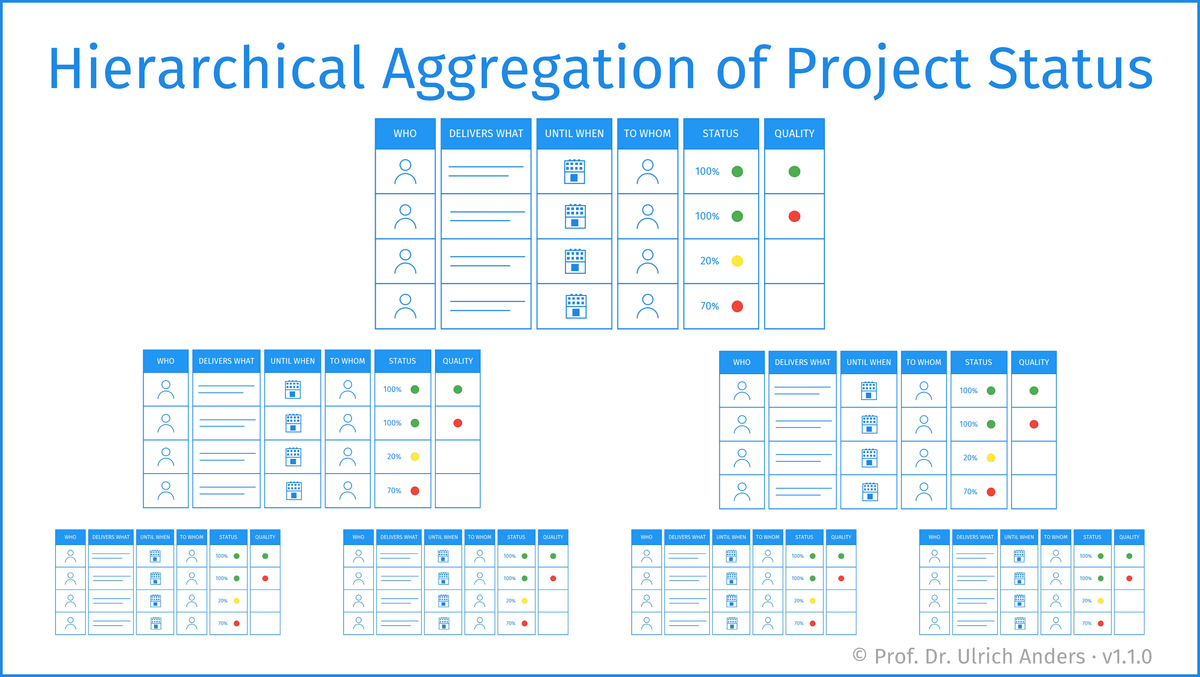The Hierarchical Aggregation of the Project Status
v1.1.0
·Prof. Dr. Ulrich Anders
"Project Management without status reports is like an aeroplane without instruments. You would basically fly blind."
v1.1.0
·Prof. Dr. Ulrich Anders
Conceptually speaking, a project is just a set of deliverables. From this insight, I was able to develop the Essence of Project Management:
WHO | DELIVERS WHAT | BY WHEN | TO WHOM | STATUS | QUALITY | COMMENT
The beauty about this essential sentence is, that it does not matter if we are talking about a huge project with hundreds of thousands of deliverables or just a small project with a few deliverables. The essence always remains the same.
The second insight is that each deliverable can again be a set of underlying deliverables. If you combine these two thoughts you recognize that a project sheet as it is suggested here is recursive.
This is quite an innovative and far-reaching thought for project controlling. Independent on which hierarchical level you view a project you can always use the same template layout because the underlying basis of the Essence of Project Management always remains the same.
So, if you start from the bottom of a project you can just cluster some of these individual activities and aggregate them up into an overall deliverables. These aggregated deliverables can then again be aggregated and so on until you reach the final and top aggregation. This final aggregation, obviously, represents the whole project. Its deliverable is the project result as such.
If you start from the top, you can drill into every deliverable to see what is underneath until you reach deliverables that do not have further sub-deliverables.
Considering projects in this way offers a lot of transparency. It is immediately clear, how information is aggregated up. The ratios at the top result directly from the underlying information. The status for each aggregated deliverable is just the aggregated status of its underlying sub-deliverables.
Thinking about projects in this manner also offers additionally a large advantage for organizing people in a project. Each deliverable has one and only one owner who is responsible for this deliverable. How he or she, however, is producing the deliverable is perfectly up to the owner.
It does not matter if the owner is
Thinking about projects along this way allows all organizational forms to cooperate. Organizing information in a hierarchical way generates the structure that gives people the freedom to organize themselves in the most efficient way — and this may not be hierarchical but agile or otherwise.
© Prof. Dr. Ulrich Anders
prof.anders@online.de
https://project-status.orgLicense: CC BY-ND 4.0Factory ResetVersion: 0.17.6.alpha | API 6
Last change: 2022-01-02|00:58
Browser: undefined
